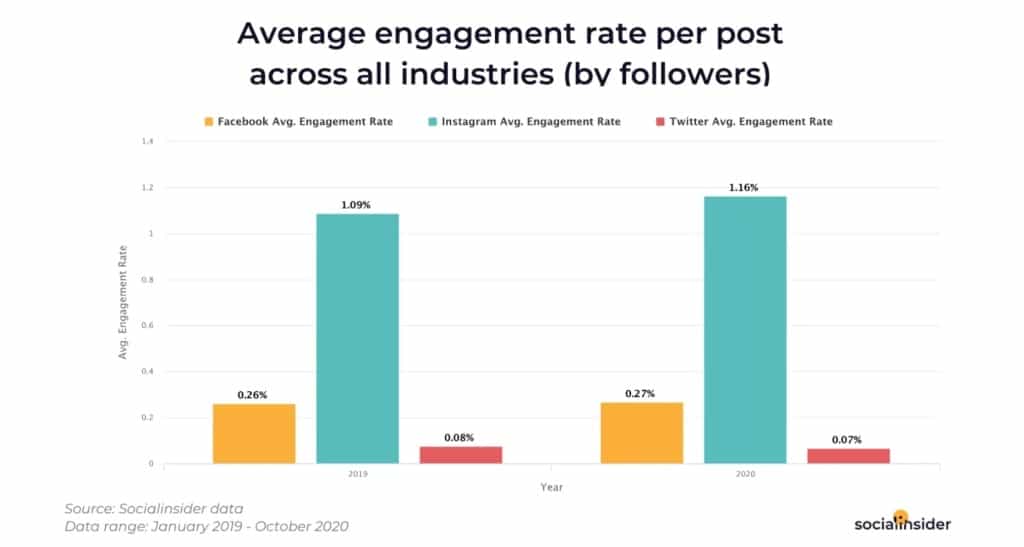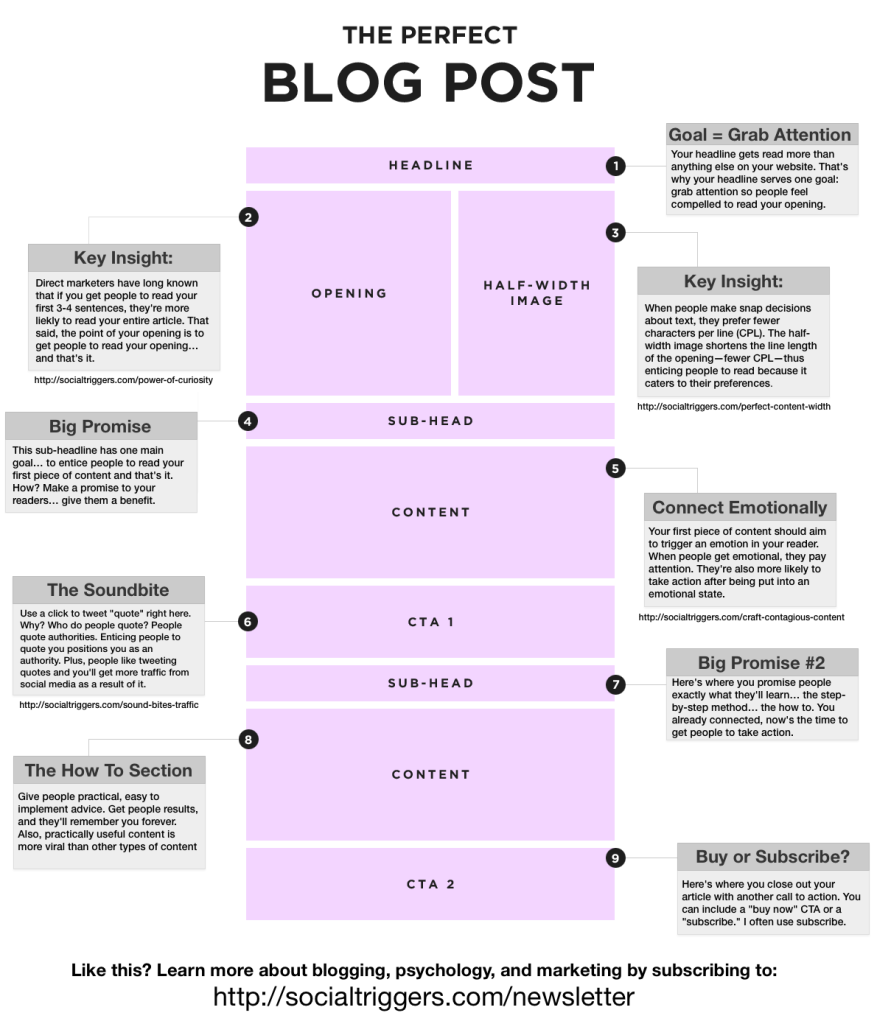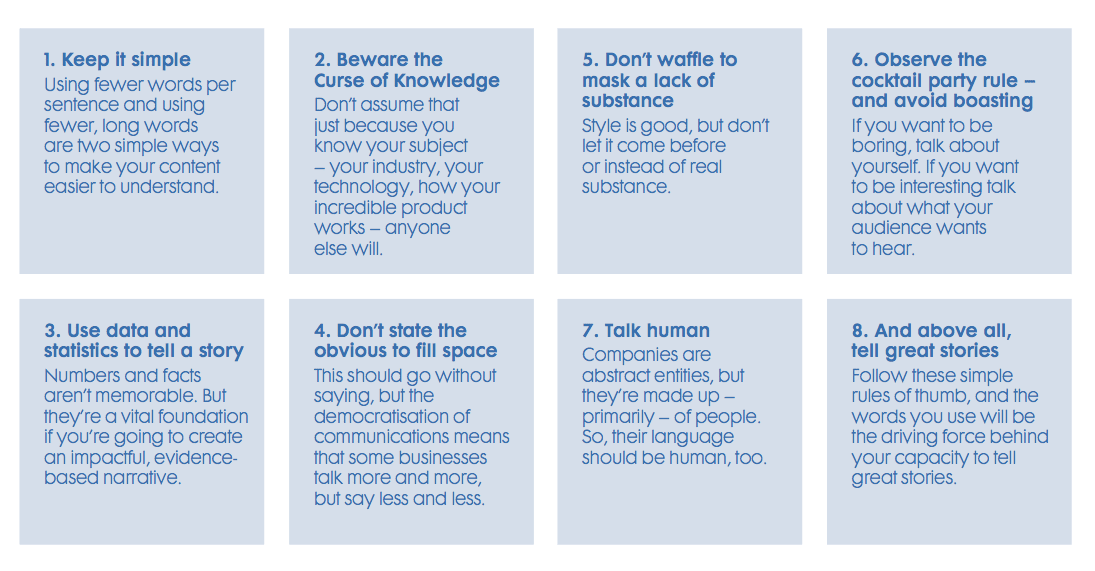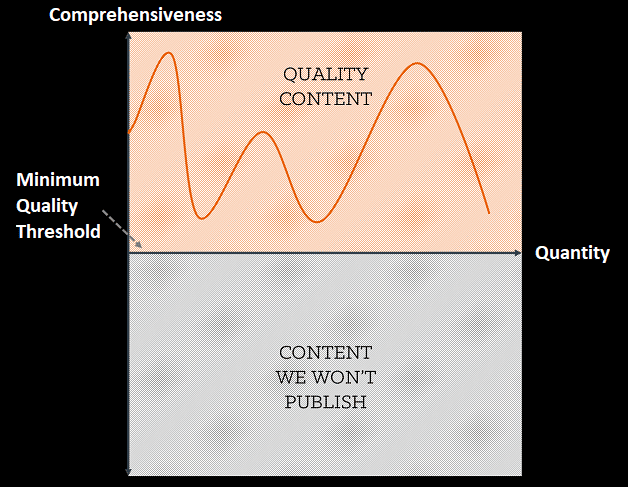
19 Content Marketing Best Practices to Propel Your Growth
Everyone knows they need content.
That’s not the problem.
In fact, I’d argue that most brands publish far too much mediocre or low-quality content.
According to WordPress’s own numbers, websites publish over 70 million new posts each month.

Think you’re safe because you have a dedicated content marketing strategy?
That’s an important start. After all, 43% of B2Bs say they have a documented strategy, per CMI. Brands with the most successful content are far more likely to have a dedicated content strategy compared to the least successful brands: 60% vs. 21% respectively.
But if you ask me, a documented content strategy isn’t enough either. Sure, a documented content strategy helps you plan goals, meet KPIs, drive traffic, and overall make your work appear valuable on paper. But then you can’t put a strategy in place and forget all about it.
New platforms continue to emerge, giving content marketers a wealth of ways to get their messages out. Many times, this leads marketers to forget their strategy and run after one-off campaigns.
However, the more things change, the more they stay the same. Nowhere is that truer than in content marketing. Content marketing best practices might change with the winds of technology. But their basic principles stay the same.
I’ve been covering Content Marketing Best Practices for more than 15 years! And one thing has remained constant in all those years, content marketing is still hot, growing, and working for the brands that use it.
The main rule of content marketing continues to be:
Give buyers engaging, compelling, thoughtful stories and they will gladly give you their attention, respect, and business.
So, what are the new best practices in content marketing and how should they influence your content creation and distribution methods?
Quick takeaways:
- Content marketing shouldn’t be thought of as an isolated strategy from other marketing tactics or business objectives. Content should provide a foundation for your overall growth strategy.
- Stop publishing mediocre content. Spend time creating content with integrity – it reflects your brand’s integrity.
- Publish meaningful and thoughtful content. Every piece should serve a specific goal and encourage a specific type of engagement.
1. Remember, Content Marketing Is a Step-By-Step Process
10 years ago, many B2B content marketers were still product-focused rather than focused on the customer and their needs. And while we have come along way, we still see brands struggling with the true meaning of content marketing.
We have learned over the years that content marketing and product marketing can co-exist and even support each other so that both achieve business goals.
Continuously creating engaging and effective stories is the single most important element of effective content marketing. It all comes down to the art of brand storytelling and activating your employees to deliver effective thought leadership. And here are the 9 steps to do just that:
- Start with defining the business case for content marketing.
- Define your target audience and their content needs.
- Document the process you will use to plan, create, publish, and measure content creation.
- Use an editorial strategy that starts with keywords your audience uses and groups them into common themes.
- Map content to each stage of the buyer journey.
- Build a content marketing destination that attracts interested buyers to your website.
- Optimize the conversion paths for any new visitors
- Distribute your content to all the channels your audience uses.
- Measure your results against the business case you established in step 1.
2. Map Your Goals and KPIs with Content
Before you can place content in your growth strategy, you need a growth strategy. Most startups and enterprises have a growth strategy mapped out. Small businesses, however, should spend time developing theirs.
Plan short- and long-term growth projections and goals: monthly, quarterly, annually, five years, etc.
Once you have a growth strategy, you can develop your content marketing strategy and apply specific goals to it. Use key performance indicators (KPIs) to track the results of your content and make sure it’s serving the broader goals of your growth strategy over time.
For example, you might want to see X% of your website traffic:
- Returning month-over-month
- Downloading lead magnets
- Subscribing to mailing lists
- Following your brand on social media
- Sharing or forwarding your content
- Converting into leads
- Converting into customers
Keep track of other growth metrics as well when you can attribute them to content: cost/lead, value of each sale, customer loyalty and churn rates, etc.
Understanding your goals and KPIs first helps you figure out what aspects of your content work and what parts need improvement. It’s easier to optimize when you know what you’re looking for.
3. Don’t Assume You Know Your Audience
Ask Silicon Valley about this one. Do you have any idea how many startups and tech companies have gone under simply because a market for their product never existed in the first place?
Lots of brands run into this problem. They assume they know who their audience is, what their audience wants, and which problems their audience needs fixed.
Sometimes, we create audience segments in our head that don’t even exist in real life!
These are grave mistakes to make because they sabotage your content and growth strategy before it even gets off the runway. If you haven’t revisited your buyer personas, accounts, and general audience segments with fresh research since March 2020, you might still be sabotaging yourself.
Research your audience consistently. Listen to them. Read their content. Really know them.
4. Pick Your Platforms
“I’m doing it all: email, every social media platform, Reddit, Discord, guest blogging, conferences, webinars, podcasts, videos, and then some.”
Don’t fall into the “be everywhere” trap – it can and will ruin your content and growth strategy. You don’t have the resources to be everywhere consistently and effectively. No one does except corporations with infinite budgets.
Pick platforms:
- Where you can share the types of content you plan to publish (more on that in #6) like video, audio, blogs, etc.
- Where you know your audience hangs out regularly – consider both firmographics and/or demographics.
- With promising futures and opportunities for growth. Don’t hinge your growth on a platform that might not exist next year.
- You have the resources to maintain consistently with high-quality content and engaging your audience. If you can’t reply to comments and messages swiftly, you don’t have time for it.
For example, the average person only spends one minute per day on Twitter – is that worth your energy? Even Snapchat seems more promising with Millennials and Gen Z spending an average of 50 minutes per day on the platform.

5. Write Content That Earns Backlinks
It’s simple: Any content you publish that other websites decide is worth linking to will encourage growth.
For starters, there’s the traffic you earn from the backlink and mention. If that link includes a direct quote or branded term, even better – it encourages brand awareness.
Secondly, Google also pays attention to backlinks. If an authoritative website trusts your content enough to use it as a source or reference with a do-follow link, that tells Google your content (and really, your entire domain) is trustworthy.
When it comes time to rank your content against a competitor’s for a keyword, guess which one Google will probably choose? Yep, the trustworthy one.
So, what makes content linkable?
- Original research, stats, and industry reports
- Interesting quotes
- Infographics, GIFs, and other media
- Anything else unique to your website others can’t replicate
6. Give People a Reason to Share Your Content
Most people struggle to create content as part of a growth strategy because they don’t consider the reasons they share content themselves. What makes you say “my friends need to see this” when you decide to share something on social media?
Valuable and interesting content gets traffic – but not shares. In reality, people only share content for a few reasons:
- Clout or social capital
- Unique value (unlike anything else)
- Intriguing storytelling
- Emotional triggers
Everything you publish should meet at least one of those points, if not more.

7. Create Content in Multiple Formats
Here’s a secret. You can publish high-quality content much more frequently if you transform it into multiple formats.
From one high-quality blog, you can create:
- Several videos
- An infographic or GIF
- A podcast with a subject matter expert interview
- Multiple social media posts and stories
As the chart below implies, interactive content is ideal but it’s not always possible or relevant. Video and audio content are the next best choices to accompany your written content for ideas people are sure to remember.

8. Add the Right CTAs to Each Piece of Content
When it comes to content for your growth strategy, your keyword dictates your call-to-action for every piece of content you create.
Why the keyword? Because the keyword tells us the reader’s/visitor’s intent.
Someone searching “what is SaaS” clearly wants a beginner’s explainer piece of content to help them understand SaaS as a concept. Content riddled with buzzwords and CTAs telling the reader to buy something are confusing at best and totally out of touch at worst. Instead, suggest a relevant eBook or email list that matches their stage of the buyer’s journey.
Meanwhile, a keyword like “best SaaS for retail e-commerce” shows that the searcher is further along in the buyer’s journey and closer to making a purchase. You might offer them a CTA for a free demo, spec sheet, or relevant case study.

9. Stick to Your Niche
You can’t be an expert in every niche or field. In fact, publishing content in every semi-relevant topic can backfire:
- Website visitors and followers won’t be able to figure out your actual expertise.
- Google’s bots won’t understand your actual expertise.
- Your content will always be too generic to resonate with anyone.
Of course, each of those points leads to a slew of other problems like poor rankings, no backlinks, non-targeted traffic, low conversions, etc.
Google’s EAT – Expertise, Authority, Trustworthiness – tells us that Google prefers ranking content from authoritative and trustworthy experts. Pick specific areas you can flex your muscles and stick within those for content in your growth strategy.
At Marketing Insider Group, we stay within four main topics:

10. Guest Post Thought Leadership Content in the Right Places
Too many brands treat guest blogging the same way they treat their regular content. They choose high-traffic general industry blogs to publish generic keyword-heavy content – the opposite of what you need from content for a growth strategy.
Don’t publish content where your colleagues will read it. Publish where your audiencewill see it! These are not always synonymous.
Treat your guest blogs with the utmost integrity. Imagine this one blog you’re submitting is the only material someone will associate with your brand. Are you proud of that or uncomfortable?
Stick with authoritative thought leadership. Every guest blog should give readers an idea of your brand’s expertise, values, and opinions. They should be able to tell whether your culture and knowledge fit their brand.
11. No Controversy = Boring Generic Content
You can’t (and shouldn’t) please everyone. While you don’t want to go out of your way to ruffle feathers, desperately trying to avoid upsetting anyone is just as damaging.
“People pleaser” content ends up too generic, bland, and boring to:
- Create a loyal following
- Earn shares and mentions
- Build brand awareness
- Stand out from competitors
If your content doesn’t stand for something, it stands for nothing and gives nobody a reason to follow you for more content. Your main goal of content for your growth strategy isn’t to build the biggest and broadest audience possible – your goal is to develop the right audience for your brand.
The trope stands: Just be yourself. Trust your knowledge, opinions, and expertise. Share them via your content.
People will either love you or know you’re not the right fit immediately – and that’s exactly what you need for sustainable growth.
12. Separate Your Content Marketing from Your Marketing Content
What’s the difference? Here’s a quick rundown:
- Your content marketing includes industry knowledge, advice, news, tips, and best practices for people to share and engage with your brand.
- Your marketing content includes strategic material teams and leads can share internally to understand how your product/service works and whether it’s right for their brand.
You need both types of content for a growth strategy that accomplishes its goals. Unfortunately, brands that publish content in isolation (rather than as one part of a growth strategy) don’t separate the two.
For example, don’t publish a case study just because you delivered incredible results. Publish a case study because the client is in your target audience’s vertical.
Your marketing content must be even more niche than your regular content. Focus on audiences by vertical, account, or job role.
13. Integrate Your Data to Track Results
Content marketing alone isn’t a growth strategy. Your growth strategy really encompasses your entire business: brand awareness, reputation, reach, sales, loyalty, engagement, etc.
That’s why content marketing metrics alone aren’t enough to understand your content’s impact on overall growth.
Instead, use tools like a CRM or content management system to provide a centralized location where you can integrate data from multiple sources.
One integrated dashboard, along with tracking tools like Facebook Pixel, helps you figure out whether your content is encouraging people to consistently interact with your brand across multiple touchpoints.
14. Use Content to Fuel Account-Based Marketing
Finding the right customers to target and drawing them in with information that helps them solve problems should be the foundation of any content marketing strategy.
However, with the advent of account-based marketing (ABM), sometimes a little product information can help your sales team carry the account over the finish line.
The way ABM works goes like this. Your content team creates valuable content that can help your target customers – let’s say a whitepaper or an e-book.
Those decision-makers who respond to the content’s call to action receive even more in-depth content. But this time, the content targets each decision-maker’s concerns.
For example, the head engineer might receive information about how your new widget can increase her manufacturing process’s efficiency by 30 percent. The chief accounting officer, who noticed that the manufacturing process for one of the company’s main products has bled red for a year, receives content showing her how using your widget has increased revenue for a similar company. And so on.
With high-value prospects, ABM has proven to boost a company’s ROI. 84 percent of all B2B companies who use ABM have discovered that their ROI has increased. 42 percent of them report a significant increase in ROI.

For B2B companies, that’s a game-changer. It’s a new guideline that needs to become part of any B2B company’s content marketing arsenal.
When you do implement ABM, take Dell’s advice and go a step further. See to it that you support the prospect’s internal teams that will put your solution to work. Provide them with all the information they need to make using your products and services a breeze.
15. Partner with Sales Teams to Create Engaging Content
Account-based marketing – or any B2B content marketing, for that matter – doesn’t work unless your sales team is on board. High-value content depends on answering the right questions.
And who knows better your prospects’ questions than your sales team? When you listen to the objections prospective customers give them, you can create content that resolves those issues.
Take that a little further and milk your subject matter experts for ideas as well. Your engineering team and your development team, as well as sales, can become a rich source of information to add needed details.
When your content answers the questions prospects ask your sales team, you’ll likely see outstanding results. Not only that but when you break down the silos that divide your teams, you’ll discover a wealth of content ideas from all across your company.
Even though we defined our original best practices for B2B content teams, many of them have always applied to B2C companies as well. Providing helpful information rather than blatant product promotions to potential customers is a good bet no matter who you’re selling to.
16. Use Stories to Capture Hearts As Well As Minds
In fact, the new content rules go even further down that road. The 12 Immutable Laws of High-Impact Messaging, for example, emphasizes that stories are the best vehicle for brand messages.
We would agree. Stories that take potential customers along a journey intrigue them.
When you make the customer, not your product, as the story’s hero, you become part of their team. As they seek to conquer whatever challenges they face, your product goes with them. It’s the sword that slays their personal or corporate dragons.

17. Empower Internal Brand Champions to Spread the Word
Even truer today than it was seven years ago, empowering your teams to post content around their areas of expertise yields amazing results. Employee-created content receives more engagement and more shares than those blog posts that took you forever to research and write.
That’s not all. Leads you get from such content are seven times as likely to result in a sale.
18. Repurpose and Distribute on All Channels
As true today as it was in 2010, this content rule might not be shiny new. However, many of the ways you can repurpose and distribute have grown to new levels. Here’s only one example.
Back then, for instance, podcasts were rare. Only companies with costly equipment could take advantage of this content channel.
That’s changed. Just go to one of the popular podcast platforms. Then you’ll see companies small and large with successful podcasts. Mobile apps, vlogs, and webinars have exploded, along with traditional blogs.
As for distribution, there are so many content marketing platforms that can help you not only distribute content. These platforms can also create customer personas, plan, segment your audience, collaborate, schedule, create, edit, post, test, and analyze the results.
19. Emphasize Quantity As Well As Quantity in Content Marketing
Seven years ago, we were just coming off a wave of keyword stuffing that made some marketers’ posts almost unreadable. Even worse, among those of us who knew better, clients would still beg us to write stuff with keywords popping out of the text like a Whack-a-Mole game.
To ensure that content attracted readers, Google and other search engines adjusted their algorithms to discourage keyword stuffing. Along with that welcome upgrade, content marketers preached the gospel of quality alone.
However, statistics began to pop up that indicated that quantity mattered, too. Of course, quality is a vital ingredient in your content strategy.
So is quantity. Those numbers show that companies that post 8 to 16 posts a month enjoy a massive uptick in inbound traffic.
As in up to four times as much. When you publish often, with consistent quality, you, too, can get that kind of traffic.
So here’s a visual to help you achieve balance:

Use Content as a Foundation to Propel Your Growth
Whether you’re a startup, established B2B company, enterprise, or small business, your growth strategy must come first. What are your short- and long-term growth objectives? Once you have your growth strategy laid out, you can easily figure out where content fits into each objective, touchpoint, and stage of the funnel.
Following these best practices and thinking of content as part of your broader growth strategy ensures everything you publish is 100% purposeful, useful, action-driven, relevant, and serves a specific goal.
Putting these new content marketing best practices to work for you can change your marketing game forever. No more junk content. No more spinning your wheels publishing for meager traffic and sales. Just motivated and driven content.
Brands trust us with their content because we deliver long-term results. Our clients have experienced 7x ROI and 178% YoY organic growth. Check out our custom Content Builder Services to see how niche content fits into your unique growth strategy.






